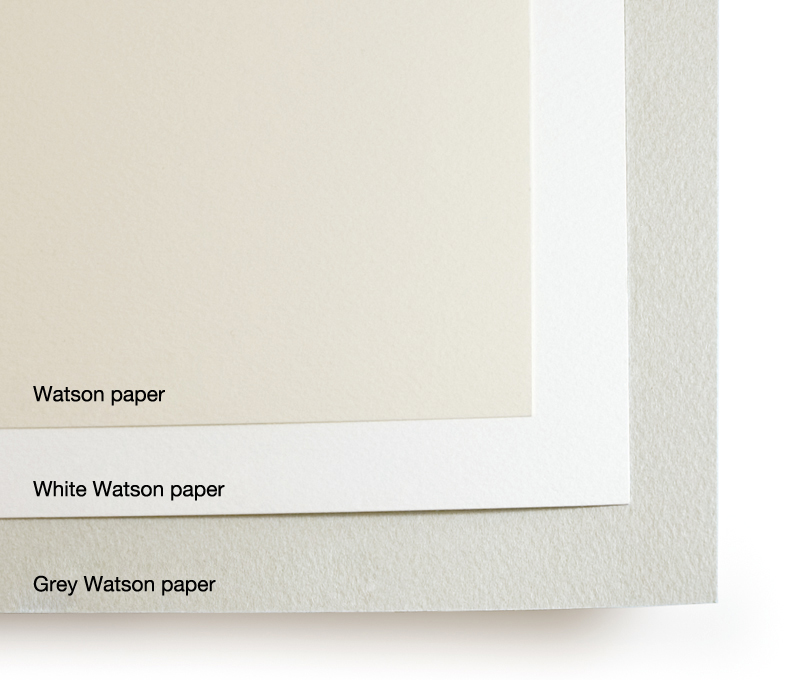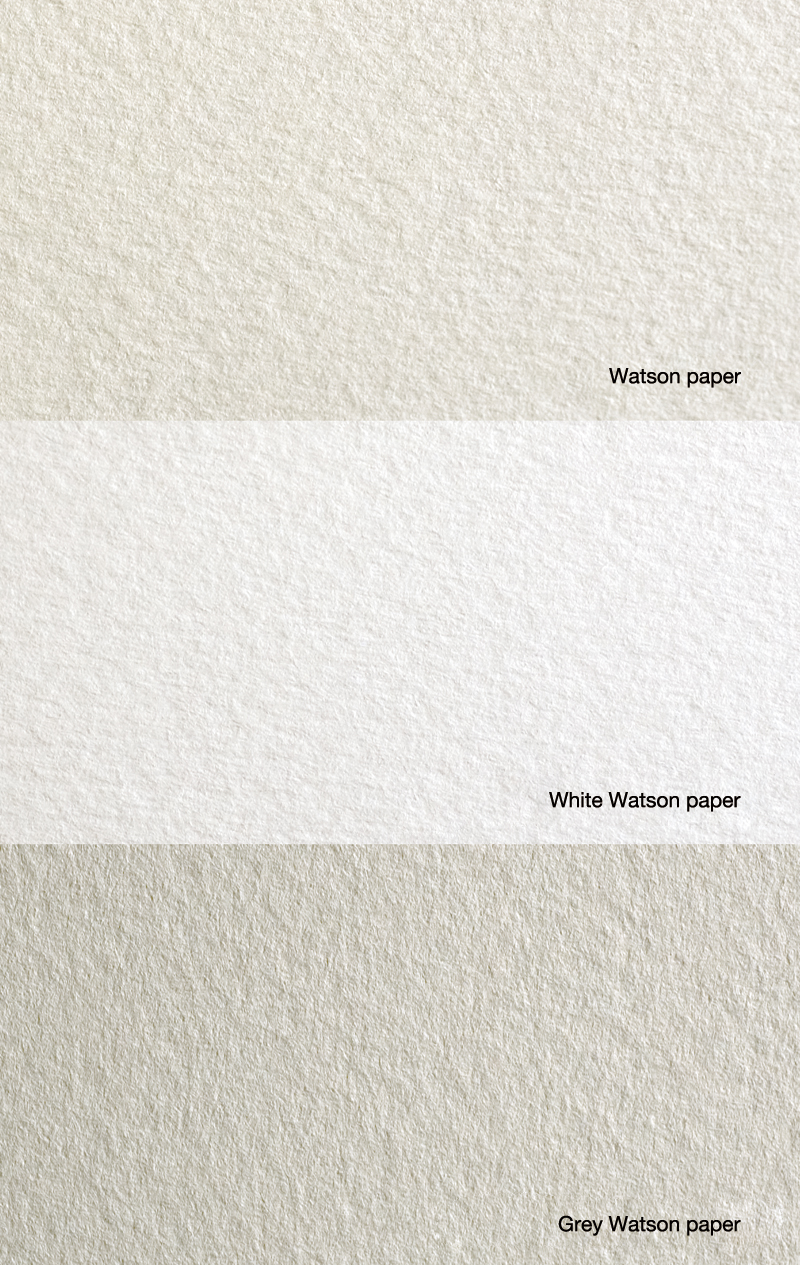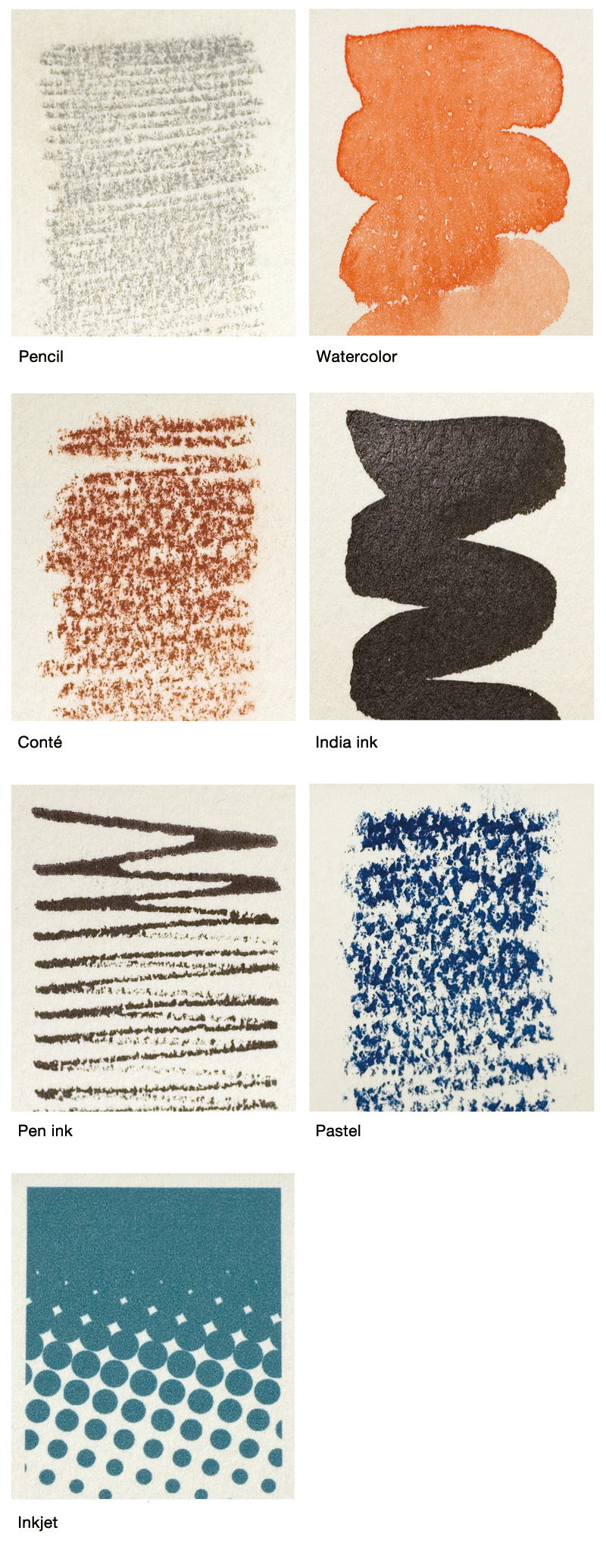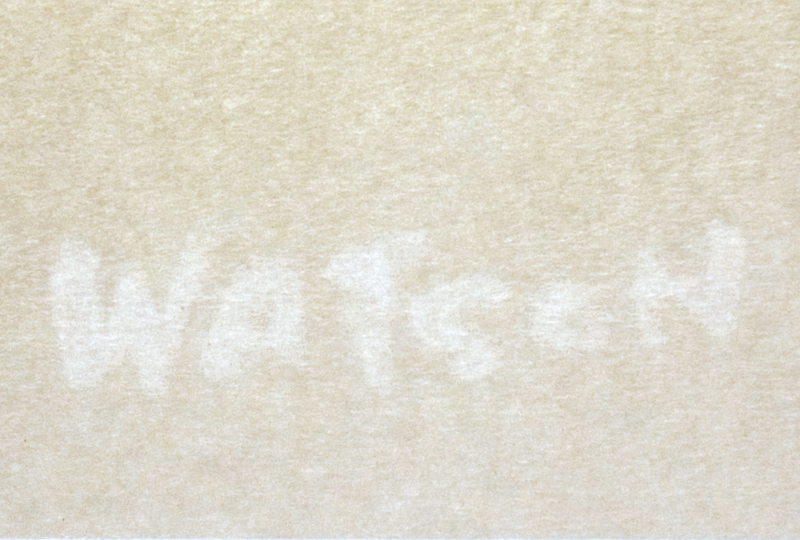Watson Paper
ワトソン紙
Watsonshi
Watson paper is a high quality watercolor paper produced in Japan and characterized by its relatively hard sizing, moderate roughness and thickness, and water resistance. It is stronger than drawing paper, less prone to abrasion from the use of erasers, and can be used not only with watercolors but with pastels. Being easy to obtain, it is a popular type of watercolor paper.
This acid-free paper is mainly made of cotton pulp blended with wood pulp. Its creamy color comes from the color of wood pulp. The color tone of the White Watson line has been contrived to enhance the paint’s color development. This product is dyed in natural white without using bleach. There is also the Grey Watson line with a cold ground color. Though this product has a stronger color, it still has the same properties and can be used as a watercolor paper too. Compared to other watercolor paper products, it is available in a greater variety of thickness and size. Thick, extra thick and super thick paper can be purchased in shiroku size (788mm x 1091mm), in 10-meter rolls, in F40 to F60 sizes ready for stretching, and in boards, as well as in bound booklet form as sketch books. There is virtually no difference in texture between the front and back of the paper but the front side is slightly rough and the back is a little smoother.
When using watercolor paint, the paper may repel too much moisture. This is due to sizing and can be remedied by wetting the surface several times with a moistened brush, removing moisture with cloth and drying the paper completely before use. Watson paper can be purchased at art supply stores.
* The example (photo) is of a test sample to demonstrate the properties of the paper and the possible expressions. It is not a recommendation of any particularly type of material. (Materials that are not generally suitable are also used to demonstrate.)

 Watson paper (close-up)
Watson paper (close-up)- Examples of strokes on Watson paper

 Watermark
Watermark
